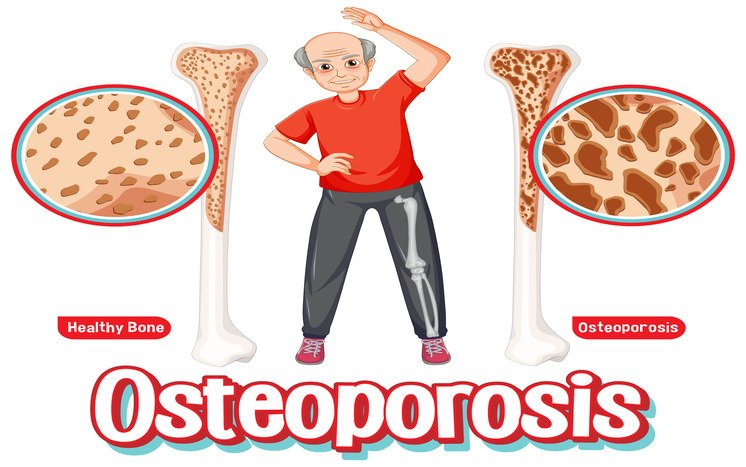
10:00am to 04:00pm (Mon to Sat) - Amrita Hospital, Faridabad
06:00pm to 08:00pm (Mon to Sat) - Arthrocare Clinic, Noida
10:00am to 04:00pm (Mon to Sat) - Amrita Hospital, Faridabad
06:00pm to 08:00pm (Mon to Sat) - Arthrocare Clinic, Noida
 October 30, 2023
October 30, 2023
Introduction
Knee pain can be a debilitating condition, affecting millions of people worldwide. For those who have exhausted conservative treatments and are seeking a more permanent solution, knee replacement surgery is often considered. In this article, we will delve into the details of knee replacement surgery, including the procedure itself, the various types of knee replacements & Joint Replacement, and the potential risks associated with this common orthopedic procedure.
Part 1: Knee Replacement Surgery Procedure
Knee replacement surgery, also known as knee arthroplasty, is a surgical procedure designed to relieve pain and improve knee function in individuals suffering from severe knee joint damage. This damage can result from various conditions, including osteoarthritis, rheumatoid arthritis, post-traumatic arthritis, and other forms of degenerative joint diseases. The procedure is typically performed by an orthopedic surgeon and involves the following key steps:
1. Preoperative Evaluation:
Before the surgery, a comprehensive evaluation is conducted to assess the patient’s overall health and the condition of the affected knee. This includes X-rays, physical examinations, and discussions about the patient’s medical history.
2. Anesthesia:
Most knee replacement surgeries are performed under general anesthesia or spinal anesthesia, which numbs the lower part of the body while the patient remains awake.
3. Incision:
The surgeon makes an incision over the knee joint, exposing the damaged surfaces of the knee. The size and location of the incision may vary based on the surgical approach.
4. Reshaping the Bone:
The surgeon carefully removes damaged cartilage and bone from the ends of the femur (thighbone) and tibia (shinbone). This is done to create space for the artificial knee components.
5. Implant Placement:
The artificial knee components, which typically consist of metal and plastic, are then implanted. These components can be cemented into place or press-fit, depending on the type of knee replacement.
6. Knee Alignment:
The surgeon ensures proper alignment and stability of the knee by adjusting the artificial components, ligaments, and tendons.
7. Wound Closure:
After confirming the stability and function of the newly implanted knee joint, the surgeon closes the incision with sutures or staples.
8. Postoperative Care:
Following the surgery, the patient is monitored in a recovery area and may be given pain medications, antibiotics, and blood thinners as needed. Physical therapy is initiated to aid in the recovery process.
Part 2: Types of Knee Replacements
Knee replacement surgery is not a one-size-fits-all procedure. There are different types of knee replacements, and the choice depends on the individual’s specific condition and needs:
1. Total Knee Replacement (TKR):
In a total knee replacement, both the femur and tibia are resurfaced with artificial components. This is the most common type of knee replacement surgery and is ideal for those with widespread knee joint damage.
2. Partial Knee Replacement (PKR):
Partial knee replacement, also known as unicompartmental knee replacement, is a less invasive option. In PKR, only one part of the knee joint is replaced, typically the medial (inner) or lateral (outer) compartment. This is suitable for patients with damage limited to one area of the knee.
3. Knee Resurfacing:
Knee resurfacing is a minimally invasive procedure that involves resurfacing the damaged portion of the knee joint with a metal cap. This option is often considered for younger, active patients with limited knee joint damage.
4. Revision Knee Replacement:
In some cases, a previously implanted artificial knee joint may need to be replaced or revised due to wear and tear, infection, or other complications. Revision knee replacement involves replacing the existing components.
Part 3: Risks and Complications
Knee replacement surgery is generally considered safe and highly successful in relieving pain and restoring knee function. However, like any surgical procedure, there are potential risks and complications that patients should be aware of:
1. Infection:
Infection at the surgical site is a rare but serious complication. It may require antibiotic treatment or, in severe cases, surgical intervention to remove infected tissue.
2. Blood Clots:
Patients are at risk of developing blood clots in the legs (deep vein thrombosis) or, in rare cases, having these clots travel to the lungs (pulmonary embolism). Blood thinners and early mobility are key preventive measures.
3. Implant Wear and Loosening:
Over time, artificial knee components may wear down or become loose, requiring revision surgery. The lifespan of knee implants varies depending on factors such as the patient’s age and activity level.
4. Nerve and Blood Vessel Damage:
While rare, damage to nerves or blood vessels in the vicinity of the surgical site can occur, potentially leading to sensory or motor deficits.
5. Stiffness and Reduced Range of Motion:
Some patients may experience postoperative stiffness or limited range of motion in the knee, which can be managed with physical therapy.
6. Allergic Reactions:
In rare instances, patients may experience allergic reactions to the materials used in the artificial knee components.
7. Persistent Pain:
Some patients may continue to experience persistent or recurrent pain, though it is often less severe than the pain before the surgery.
Dr. Mrinal Sharma: Best Knee Replacement Surgeon
When considering knee replacement surgery, it is vital to entrust your care to a highly skilled and experienced orthopedic surgeon. Dr. Mrinal Sharma is widely recognized as one of the best knee replacement surgeons, known for his exceptional skills and dedication to his patients.
Dr. Mrinal Sharma’s credentials include:
Knee replacement surgery is a significant decision, and having a skilled surgeon like Dr. Mrinal Sharma by your side can greatly enhance the chances of a successful outcome and a better quality of life post-surgery.
Conclusion
Knee replacement surgery is a transformative procedure that can significantly improve the lives of individuals suffering from severe knee pain and limited mobility. By understanding the procedure, types of knee replacement, and potential risks, patients can make informed decisions about their treatment. Dr. Mrinal Sharma, a highly regarded knee replacement surgeon, stands as a testament to the dedication and expertise that can make a substantial difference in the success of such surgeries. When considering knee replacement, seeking the care of an experienced surgeon like Dr. Mrinal Sharma is a critical step toward regaining mobility and relieving chronic knee pain.




